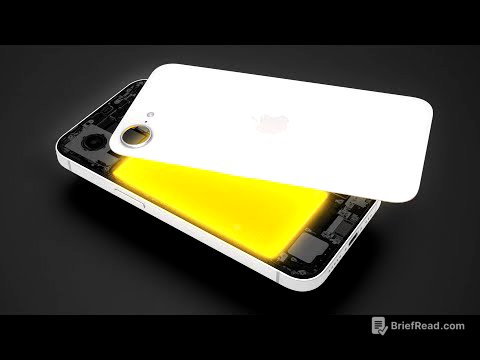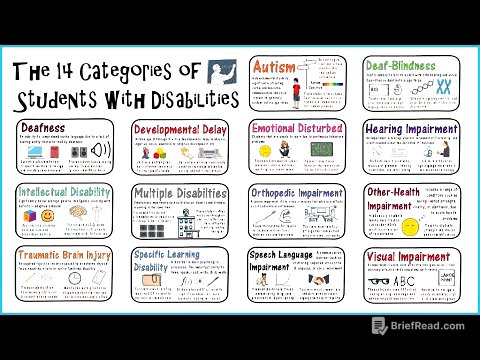TLDR;
This video explores the evolution of communication from ancient times to the digital age. It highlights the key milestones in human communication, starting with primitive methods like fire signals and drums, moving through the development of writing, postal systems, and telegraphy, and culminating in the digital revolution of the internet and mobile devices. The video emphasizes how each innovation has dramatically changed the way we communicate, connect, and share information.
- The video traces the development of communication from ancient times to the digital age.
- It highlights key milestones like fire signals, writing, postal systems, telegraphy, and the internet.
- It emphasizes how each innovation has dramatically changed the way we communicate, connect, and share information.
Ancient Echoes: Communication Before Wires and Waves [0:00]
The video begins by discussing the fundamental need for communication, which existed long before the invention of writing. Early humans used vocalizations, fire signals, and drums to convey messages over distances. These methods were limited by distance and terrain but were essential for survival and community building. The development of writing marked a significant advancement, allowing for the transmission of complex information and the preservation of knowledge for future generations.
The Written Word Takes Flight: From Messengers to Mail [4:38]
While visual telegraphy offered speed for simple messages, the written word remained essential for transmitting complex information. Throughout history, empires and individuals relied on messengers to transport letters, documents, and news over distances. The ancient Persians, known for their rapid communication network, used a system of mounted couriers to transmit messages across their vast empire. The development of postal systems marked a significant advancement in written communication, with organised networks of postal roads and stations facilitating the transport of letters and parcels. The invention of printing in the 15th century further accelerated the spread of information, fuelling a growing demand for efficient postal services.
The Enlightenment Ignites a Revolution: The Optical Telegraph [7:09]
The 18th century witnessed a surge in scientific and technological innovation, driven by the Enlightenment. Among these revolutionary inventions was the optical telegraph, a system that used visual signals to transmit messages over long distances. Claude Chappe, a French engineer, developed a practical optical telegraph system in the late 18th century. Adopted by the French government, the system used a series of towers topped with movable arms. Operators at each tower manipulated the arms according to a pre-determined code, relaying messages from one tower to the next. The optical telegraph revolutionised long-distance communication, enabling messages that once took days or weeks to arrive to be transmitted in a matter of hours.
The Electric Spark: Morse and the Electric Telegraph [9:35]
The discovery of electricity in the 18th century opened up new possibilities for communication. Inventors and enthusiasts experimented with ways to harness this mysterious force for practical applications. In the 1830s, Samuel Morse, an American artist and inventor, developed a system for transmitting electrical signals via wires. His invention, the electric telegraph, would revolutionise communication and usher in a new era of instantaneous communication. Morse's system used a simple code of dots and dashes, later known as Morse code, to represent letters and numbers. Operators tapped out messages on a telegraph key, sending electrical impulses along a wire. At the receiving end, an electromagnet translated these impulses into audible clicks, which a skilled operator could then decipher. The electric telegraph spread rapidly across the globe, connecting cities, countries, and continents. The first telegraph lines were built in the 1840s, connecting Baltimore and Washington D.C. Within a few decades, a vast network of telegraph wires crisscrossed North America and Europe. The transatlantic cable, completed in 1858, established the first instantaneous communication link between North America and Europe. This technological marvel reduced the Atlantic Ocean, once a formidable barrier to communication, to a mere heartbeat.
Speaking Across Continents: The Telephone and the Triumph of the Voice [12:05]
While the electric telegraph was revolutionary, it still relied on coded messages. The human voice, with its nuances and inflections, remained absent from this new era of instantaneous communication. Alexander Graham Bell, a Scottish-born scientist and inventor, sought to capture and transmit the human voice via wires. In 1876, he achieved his goal with the invention of the telephone. Bell's telephone consisted of a simple transmitter and receiver. Speaking into the transmitter, a diaphragm vibrated, creating variations in an electrical current. These variations travelled along a wire to the receiver, where they caused another diaphragm to vibrate, reproducing the sound of the speaker's voice. Bell's famous first words spoken over the telephone, "Mr. Watson, come here, I want to see you," marked a pivotal moment in the history of communication. The impact of the telephone on society was immediate and profound. For the first time, people could converse with each other over long distances in real time. The intimacy and immediacy of voice communication transformed personal relationships, commercial transactions, and even political discourse. Telephone networks expanded rapidly, connecting homes, offices, and communities. The telephone became an indispensable tool for communication, fostering closer bonds between individuals and bridging the distances between communities and cultures.
Wireless Wonders: The Radio Conquers Distance [14:26]
While the telephone revolutionised voice communication, it remained tethered to wires. The dream of transmitting information wirelessly, without the constraints of physical connections, captivated inventors and scientists at the end of the 19th century. Guglielmo Marconi, an Italian inventor, is credited as a pioneer in the development of practical radio communication. Marconi built upon the work of earlier scientists, including James Clerk Maxwell and Heinrich Hertz, who had demonstrated the existence of electromagnetic waves. Marconi developed a system for transmitting and receiving these waves over long distances, laying the foundation for wireless telegraphy and eventually radio broadcasting. In 1895, Marconi succeeded in transmitting a wireless signal over a distance of two miles. In 1901, he achieved a historic milestone by sending the first wireless telegraph message across the Atlantic Ocean, from England to Newfoundland, Canada. This feat captured the world's imagination, demonstrating the potential of radio to connect people across vast distances without the constraints of wires. The early 20th century saw the rapid development and adoption of radio technology. Wireless telegraphy became an essential tool for maritime communication, enabling ships at sea to communicate with each other and with coastal stations. The sinking of the Titanic in 1912, a tragedy exacerbated by inadequate radio communication, underscored the importance of reliable wireless communication at sea. Governments and armed forces quickly recognised the strategic importance of radio, adopting it for the transmission of information. The invention of the vacuum tube in the early 20th century paved the way for the development of radio broadcasting, amplifying radio signals. Vacuum tubes made it possible to transmit voice and music over long distances. The first commercial radio stations emerged in the 1920s, ushering in a new era of mass communication. Radio broadcasts entertained, informed, and connected people across geographical and cultural boundaries. Radio became a ubiquitous presence in homes around the world, transforming how people consumed news, enjoyed entertainment, and connected with the outside world.
Images Without Wires: The Rise of Television [17:15]
The success of radio broadcasting fuelled the desire to transmit not only sound but also images wirelessly. Inventors and engineers experimented with various technologies to achieve this goal, leading to the development of television in the first half of the 20th century. Philo Farnsworth, an American inventor, is credited with making significant contributions to the development of electronic television. His invention of the image dissector tube, a device that converted light patterns into electrical signals, proved crucial in the development of early television systems. The first experimental television broadcasts began in the 1920s and 1930s. However, it was only after World War II that television began to spread on a large scale. The post-war economic boom in the United States, combined with advancements in television technology, led to a surge in television ownership in the 1950s and 1960s. By the 1960s, television had become a ubiquitous presence in American homes, supplanting radio as the dominant medium for news and entertainment. The impact of television on society was profound. It brought breaking news, sporting events, and entertainment into people's living rooms, creating a shared cultural experience. Television advertising became a powerful force, shaping consumer preferences and influencing popular culture. Politicians recognised the power of television to reach a mass audience, transforming political campaigns and governance. Television's ability to transmit both sound and images made it a powerful medium for storytelling, education, and propaganda, shaping how people understood the world around them.
The Digital Age: From Satellites to Smartphones [19:25]
The second half of the 20th century witnessed a technological revolution that would radically transform communication: the digital revolution. The invention of the transistor in the 1940s and the integrated circuit in the 1950s laid the foundation for the development of smaller, faster, and more powerful computers. These advancements in computing power, coupled with the development of digital communication technologies, paved the way for the internet, mobile phones, and the interconnected world we live in today. In the 1960s, the United States Department of Defense developed ARPANET, a decentralised network that connected research institutions and military installations. ARPANET, considered the precursor to the internet, demonstrated the potential of packet switching, a method for breaking data into small packets and routing them independently across a network. This decentralised approach proved more resilient and adaptable than traditional circuit-switched networks, laying the foundation for the robustness and scalability of the internet. The 1970s and 1980s saw the development of personal computers, which made computing power accessible to individuals and businesses. The invention of the World Wide Web in 1989 by Tim Berners-Lee, a British scientist, provided an intuitive interface for accessing and sharing information on the internet. The World Wide Web transformed the internet from a niche technology used primarily by academics and researchers into a global phenomenon accessible to billions of people. The convergence of computing, communication, and digital technologies in the late 20th and early 21st centuries led to an explosion of new devices and applications. Mobile phones, initially designed for voice calls, evolved into powerful handheld computers capable of accessing the internet, sending emails, streaming videos, and running a wide range of applications. Social media platforms emerged, connecting people across geographical boundaries and transforming how people interact, share information, and consume news. The digital age has ushered in an era of unprecedented connectivity, with profound implications for how we live, work, and interact with the world. The internet and mobile devices have become indispensable tools for communication, commerce, education, entertainment, and social interaction. The free flow of information has empowered individuals, fostered innovation, and transformed industries. As technology continues to evolve at an exponential pace, the future of communication promises even more exciting possibilities. From artificial intelligence to virtual reality, the next generation of communication technologies has the potential to further blur the lines between the physical and digital worlds, creating new forms of human connection and transforming how we live and interact with the world around us.









